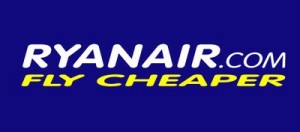ryanair: a brand i love to hate
Eliminating co-pilots; offering standing-only cabins; asking customers to work the baggage conveyor belt – these are the things Michael O’Leary dreams of. As CEO of Ryanair, O’Leary loves to propose provocative potential developments for his airline.
Does he do it because he’s a rabble-rousing PR machine or because he’s a shrewd businessman – or both? I don’t know. But I do know that I both hate his brand and love it at the same time.
The hate part is probably easy to understand. Between fees for carry-ons, inconvenient airports, and frigid employees (oh and let’s not forget O’Leary’s threat to start charging for using the bathroom), what’s not to hate about Ryanair? Now, I’m not a travel snob – I fly my share of Southwest flights and stay at budget hotels – but the thought of such a horrendous flying experience is repulsive to me. So hate the brand, I do.
But, why the love? Because as a brand person, I appreciate the way O’Leary has built his brand and I think a lot of other companies could learn from the brand’s willingness to buck conventions, its commitment to its target, and its authenticity.
– It’s clear, O’Leary sees the world differently from most. In a recent Businessweek profile, he explains, “If you don’t approach air travel with a radical point of view, then you get in the same bloody mindset as all the other morons in this industry: This is the way it has always been, and this is the way it has to be, so nothing changes.”
He’s challenged every industry convention and in doing so, has developed a unique brand identity and competitive position. And in the sea of sameness which is the consumer airline industry, Ryanair certainly stands out.
– Ryanair isn’t for everybody and they’re just fine with it. The brand targets the cheap travelers whose priority is a low fare — and the company delivers a customer experience appropriate for that target.
The Businessweek piece states, “O’Leary says that for decades, airlines have been mixing up their breeds of passengers – treating cheap budget travelers as though they were corporate tycoons, handling them with a level of courtesy they neither receive anywhere else in their lives nor truly expect.” So instead Ryanair focuses solely on offering low fares and does so by keeping operating costs to a minimum.
– Ryanair says what it does and does what it says. “…The physical process of getting from point A to point B shouldn’t be pleasant, nor enriching,” O’Leary declares. So the brand doesn’t tell you it will be.
O’Leary’s statements seem like provocations, but at least they’re not platitudes. Unlike practically every other airline these days, the brand doesn’t overpromise and under-deliver.
So as much as I personally would never willingly fly Ryanair, professionally I admire the brand. It’s probably one of the best examples of a “lighthouse brand.”
Account planner Adam Morgan introduced the marketing world to the concept of lighthouse brands in his excellent book, Eating the Big Fish: How Challenger Brands Can Compete Against Brand Leaders. Although the text was published over 10 years ago, it remains one of the best references for developing and executing brand strategies today.
The book outlines eight “credos” which successful Challenger brands embody – one is “Build a Lighthouse Identity.” Morgan writes, “Success as a Challenger comes through developing a very clear sense of who or what you are as a brand/business and why – and then projecting that identity intensely, consistently, and saliently to the point where, like a lighthouse, consumers notice you (and know where you stand) even if they’re not looking for you.”
The lighthouse brand concept resonates with me strongly because I’ve seen far too many brands squander their equity as they go chasing after other brands or an elusive audience instead of embracing and celebrating what they are and in doing so attracting customers to them. Morgan explains that it should be no surprise that consumers find brands which have clearly forged and insistently communicated their identities appealing: “People are drawn to strong brands.”
Clearly not all people are drawn to all strong brands – but enough people are drawn to make it a business success.
According to Businessweek, Ryanair has turned healthy net profits in 9 of the last 10 years – at a time when the global airline industry collectively lost nearly $50BB. And when you read how a lighthouse brand works, you begin to see how it’s been able to do so.
“Challengers do not seem to plot their path by the rest of the world,” Morgan explains. “They are confident enough to invite the world to navigate by them…They have a very clear sense, first and foremost, of who they are, not as a sense of their own external image, but as a sense of their own internal identity…Everything else in the company flows from this – behavior, image, communication, culture.”
